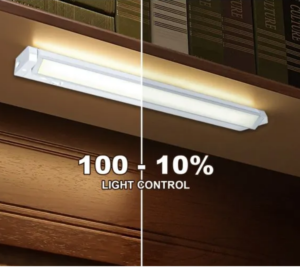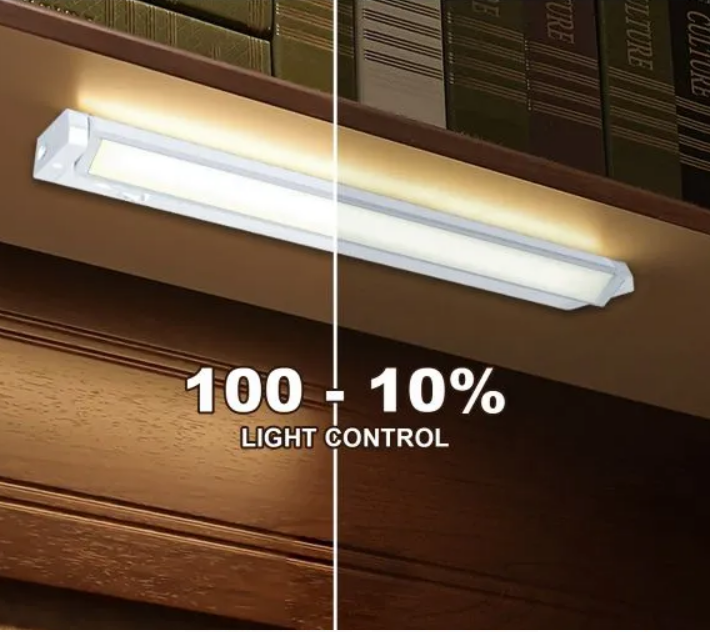
Ever stood in your kitchen at night, wishing for the perfect under-cabinet glow? I know I have.
Choosing the right under-cabinet lighting involves considering the type of light, layout, measurements, and the number of fixtures needed to suit your project's needs.
Let me walk you through how I figured it all out for my own project.
What kind of under-cabinet lighting should I use?
I remember staring at the countless options, feeling overwhelmed by the choices.
LED lights are the best for under-cabinet lighting due to their energy efficiency, long lifespan, and versatility in color temperatures.

Dive Deeper
When I first started exploring under-cabinet lighting, I was torn between LED, fluorescent, and xenon options. I wanted something that was not only functional but also added a touch of elegance to my kitchen.
Comparing Lighting Types
| Lighting Type | Pros | Cons |
|---|---|---|
| LED | Energy-efficient, long-lasting, cool to touch | Higher upfront cost |
| Fluorescent | Bright light, affordable | Contains mercury, shorter lifespan |
| Xenon | Warm light, dimmable | Generates heat, less energy-efficient |
After much deliberation, I chose LEDs. Their energy efficiency and longevity convinced me they were worth the investment. Plus, the variety in color temperatures meant I could customize the ambiance to my liking.
If you're curious about the different color temperatures, check out this color temperature guide.
How do you layout under cabinet lights?
Figuring out the layout was like piecing together a puzzle, but I enjoyed every minute.
Position under-cabinet lights towards the front of the cabinet, evenly spaced, to ensure consistent
mination across the countertop.

Dive Deeper
Planning the layout involved a bit of strategy. I realized that placing the lights towards the front edge of the cabinet1 minimizes shadows and provides better task lighting. I measured the length of my cabinets and calculated how many fixtures I'd need to achieve even lighting.
I also considered the type of fixtures: linear lights or puck lights2. Linear lights offer continuous illumination, which is great for tasks like chopping vegetables. Puck lights create pools of light and can add a dramatic effect.
Here's a quick comparison:
| Fixture Type | Best For | Installation |
|---|---|---|
| Linear Lights | Continuous lighting | Mounted along the length |
| Puck Lights | Accent lighting | Spaced evenly or at focal points |
Deciding between these options depended on the effect I wanted. In the end, I opted for linear lights for their practicality.
If you're interested in layout tips, this layout planner was incredibly helpful.
How to measure for under-cabinet lighting?
Measuring felt daunting at first, but it turned out to be simpler than I thought.
Measure the length of your cabinets and the depth underneath to determine the size and number of lighting fixtures needed.

Dive Deeper
Accurate measurements are crucial. I grabbed my tape measure and noted the length of each cabinet section. This helped me decide whether to use single long fixtures or multiple smaller ones.
I also measured the depth under the cabinets to ensure the fixtures would fit without being visible unless you're directly underneath. This hidden installation keeps the focus on the light, not the fixture.
Don't forget to account for any obstacles like brackets or molding. I almost missed a decorative edge that would have blocked part of the light.
For a step-by-step guide, this measurement checklist came in handy.
How many under cabinet LED lights do I need?
Calculating the number of lights was a balancing act between brightness and aesthetics.
You'll need enough LED lights to cover the length of your cabinets evenly, typically one linear fixture per cabinet or puck lights spaced 8-12 inches apart.

Dive Deeper
Determining the number of lights required me to consider both the length of my cabinets and the desired brightness. For linear LEDs, it's straightforward: match the length of the light strip to the cabinet.
With puck lights, I spaced them about 10 inches apart for even illumination. I made sure to check the lumens rating to ensure the lights were bright enough for my needs.
Here's a formula that helped me:
- Linear Lights: Total cabinet length divided by the length of the fixtures.
- Puck Lights: Total cabinet length divided by spacing interval.
Adjusting based on personal preference is key. I preferred a brighter workspace, so I leaned towards more fixtures.
If you're unsure, this lighting calculator can provide a customized recommendation.
Conclusion
Choosing under-cabinet lighting turned out to be a rewarding experience, and I hope my journey helps you with yours.
-
This link helps readers understand the benefit of strategically positioning lights at the cabinet’s front edge to enhance task lighting and shadow reduction. ↩
-
This link provides context on the pros and cons of linear vs. puck lighting, allowing readers to make informed choices for optimal lighting based on task requirements and aesthetic impact. ↩

